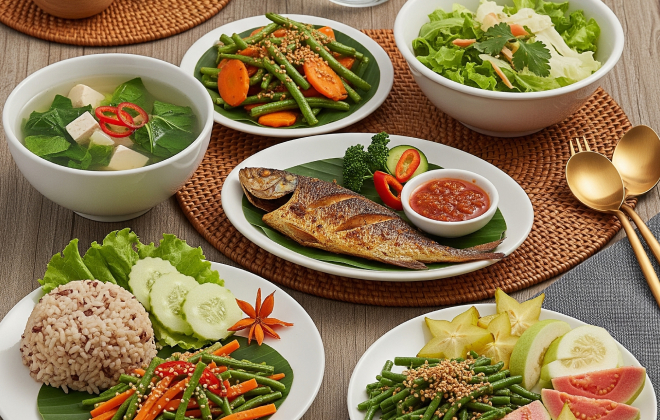


Living with diabetes, whether Type 1, Type 2, or gestational, doesn’t mean sacrificing flavour or culinary enjoyment. The modern diabetic kitchen is a vibrant space where practical meal planning meets delicious, blood sugar-friendly recipes. Gone are the days of restrictive, bland diets; contemporary approaches to diabetes management emphasise balanced nutrition, portion control, and mindful eating, all while embracing a wide array of ingredients. The key lies in understanding how food impacts blood glucose levels and equipping oneself with the knowledge and tools to prepare meals that are both nourishing and exciting.
Read on to get ideas on how to get creative with your diabetic diet.
At the heart of diabetic meal planning is an understanding of how macronutrients – carbohydrates, proteins, and fats – affect blood sugar.
A well-stocked kitchen is the foundation of successful diabetic meal planning. Focus on fresh, whole ingredients and smart swaps:
Stock up on whole grains (quinoa, brown rice, wholemeal pasta, oats), pulses (lentils, chickpeas, beans), nuts, seeds, herbs, and spices. Pick low-sodium broths and tinned tomatoes.
Keep plenty of fresh vegetables (especially leafy greens, broccoli, peppers), lean proteins (chicken breast, fish, eggs, tofu), and low-fat dairy or dairy alternatives.
Effective meal planning is crucial for consistent blood sugar control and takes the guesswork out of daily eating.
Here are ideas of some flavourful yet simple diabetic recipes for breakfast, lunch and dinner, that align with diabetic meal planning principles:
Here is another easy diabetic dinner recipe with healthier sambal to keep blood sugar levels in control.

The journey to effective blood sugar control through diet must not be a culinary sacrifice. By embracing the principles of the modern diabetic kitchen – understanding macronutrients, stocking up on wholesome ingredients, implementing smart meal planning strategies, and exploring delicious, balanced recipes – individuals with diabetes can enjoy a rich and varied diet.
This approach not only aids in managing blood glucose levels but also contributes to overall well-being, energy, and a sustainable, enjoyable relationship with food. Remember, consistency and informed choices are your best allies in maintaining optimal health while living with diabetes. Always consult a healthcare professional or a registered dietitian for personalised dietary advice.
Sources:
Spread the love, follow us on our social media channels